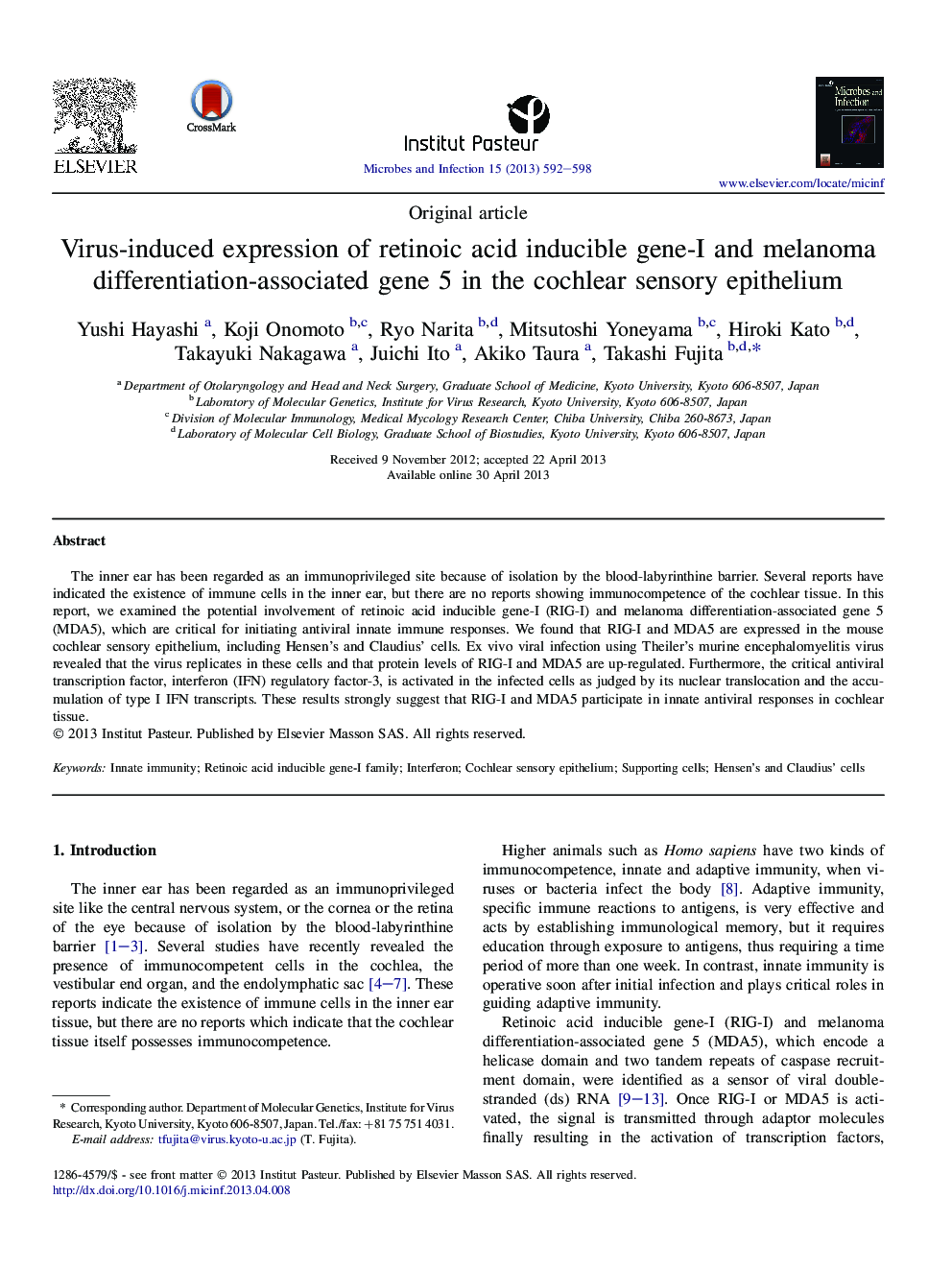| Article ID | Journal | Published Year | Pages | File Type |
|---|---|---|---|---|
| 6135901 | Microbes and Infection | 2013 | 7 Pages |
Abstract
The inner ear has been regarded as an immunoprivileged site because of isolation by the blood-labyrinthine barrier. Several reports have indicated the existence of immune cells in the inner ear, but there are no reports showing immunocompetence of the cochlear tissue. In this report, we examined the potential involvement of retinoic acid inducible gene-I (RIG-I) and melanoma differentiation-associated gene 5 (MDA5), which are critical for initiating antiviral innate immune responses. We found that RIG-I and MDA5 are expressed in the mouse cochlear sensory epithelium, including Hensen's and Claudius' cells. Ex vivo viral infection using Theiler's murine encephalomyelitis virus revealed that the virus replicates in these cells and that protein levels of RIG-I and MDA5 are up-regulated. Furthermore, the critical antiviral transcription factor, interferon (IFN) regulatory factor-3, is activated in the infected cells as judged by its nuclear translocation and the accumulation of type I IFN transcripts. These results strongly suggest that RIG-I and MDA5 participate in innate antiviral responses in cochlear tissue.
Related Topics
Life Sciences
Immunology and Microbiology
Immunology
Authors
Yushi Hayashi, Koji Onomoto, Ryo Narita, Mitsutoshi Yoneyama, Hiroki Kato, Takayuki Nakagawa, Juichi Ito, Akiko Taura, Takashi Fujita,
